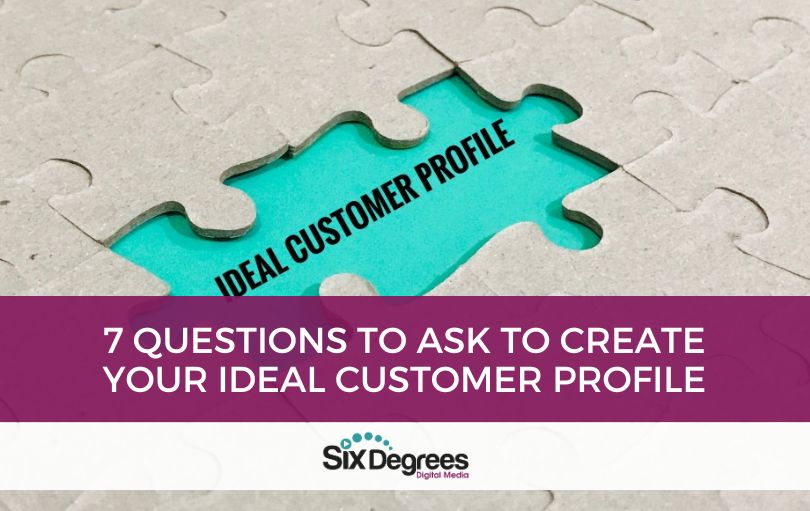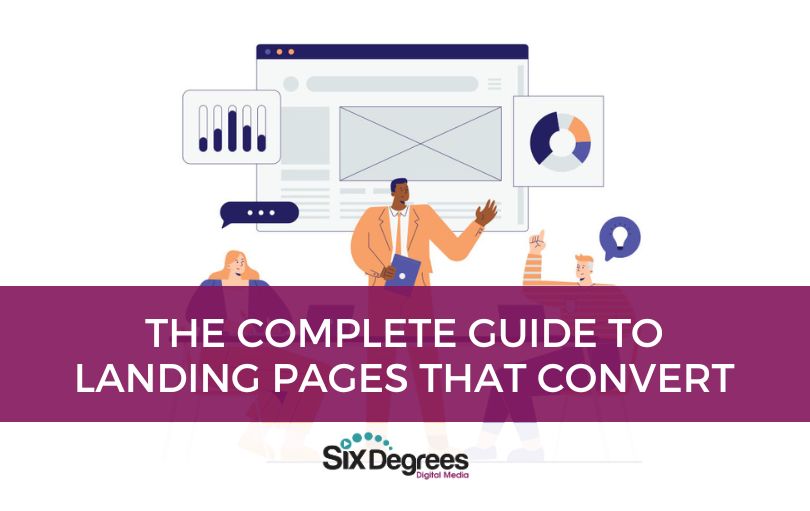Sometimes the most critical aspects of your marketing campaign can also be the trickiest.
The level of success you can achieve with your online marketing is dependent upon how well you know the people you are marketing to.
That’s why it’s important to have a clear definition of who your ideal customer is.
Creating an Ideal Customer Profile will give you insight on what your target demographic likes and doesn’t like as well as what drives them to action.
Detail is key. Here are the basics that you need to start with:
• Age
• Gender
• Income
• Marital status
• Websites they frequent
• What other businesses they engage with
All of this data will help understand what your target demographic is interested in and how you can reach them online.
A well-written Ideal Customer Profile will help you access these people much easier than you did before and since you know what they are looking for, you’ll be able to get them interested in what you have to say.
Unfortunately, without an Ideal Customer Profile, you can end up wasting your time and resources on things that don’t work.
With a poorly-constructed profile, you run the risk of reaching the wrong people altogether or worse, pushing your target demographic away.
Don’t worry, though. Check out these seven questions as you start to write your Ideal Customer Profile and you’ll be on your way to success.
Question 1: What is the product or service you want to sell the most?
If you have an array of products and services, focus on the one that you want to sell the most.
Sometimes, this is the product or service that is the most profitable to you and sometimes it’s just the one that brings in the most customers.
When you build your profile, start by thinking about the kind of customer that buys this product or service first.
Your ideal customer isn’t going to be someone who spends a small amount of money and then never engages with you again, so don’t waste your time marketing to them.
Question 2: What problem does your product or service solve?
Remember that customers don’t buy products or services. They buy solutions.
You know the saying, they don’t need a hammer, they need a hole in the wall. They’ll readily buy the benefits that those products and services produce.
What immediate result will they realize from your product or service?
Once you know what problem your ideal customer has, you can think about what kind of people would encounter that problem in the first place.
For example, a career school can solve a problem for people who are looking to start a new career.
By that logic, you may find that marketing to those with a wealthy income, retirees, or business owners won’t help you.
That’s more of an obvious example – don’t be afraid to explore the nitty-gritty of why your target demographic has their specific problem.
Question 3: What are the ages and genders of people who buy from you the most?
This may seem pretty straightforward, but make sure that you are actually looking at the demographics of your customers.
Don’t just assume that you know the age and gender of your ideal customer.
Even if you are right in your assumption, looking at the data can help you to identify a niche market.
If you are wrong in your assumption, you would end up marketing to a less-profitable demographic.
Once you have the correct information, keep it in mind.
Think about and research the way a specific gender or generation does business.
Each demographic is going to see things from different angles and you want to connect with them there rather than alienate them.
People generally like buying from companies that share their values, and with whom they’ve developed a relationship over the years.
Your products and services should reflect the changing value and needs of your customers.
Question 4: What is the income range of the person who buys from you the most?
How much your customers earn can be an early indication of knowing how much they’re willing to spend.
It helps to better understand their lifestyle preferences and education levels, which in turn can help marketers and business owners make better decisions with respect to location, advertising/marketing, and product or service selection.
Income levels also come in handy when you are trying to frame your marketing.
If the people who buy from you the most are lower-middle-class families, it would make more sense to frame your product or service as “affordable” than it would to call it “luxurious”.
Question 5: What is your unique selling point over your competitors?
Now that you are starting to get an idea of who your ideal customer might be, think about what aspects of your business would make you look more appealing than your competitors in the eyes of your target demographic.
Knowing your ideal customer not only helps you market to them better, but it can help you improve your products and services so that you can better meet their needs.
Question 6: Where does most of your business come from?
If you are a local business, think in terms of specific neighborhoods, surrounding areas, out-of-towners, vacationers etc.
What social media venues do your customers frequent the most? In today’s world, cross-channel and multi-channel marketing are real buzz words that confuse many companies.
Many companies still aren’t sure where their business is coming from. This confusion can lead to an unnecessary waste of resources and time.
Depending on the customer and how you’ve set up your marketing platforms, they could be interacting with you over a number of marketing channels.
Question 7: What marketing efforts have worked in the past and why?
It’s important to take a look at your marketing history so that you can repeat successes and not failures.
Look at these instances again once you feel like you understand your ideal customer more.
Can you tell why they were successful or unsuccessful? Try to repeat the marketing that worked for you with an understanding of how it meets your ideal customer’s needs.
You may even find that it works much better with that understanding.
Tools for Determining Customer Profiles
A good way to find the data you need to build your customer profile is to use sites like Quantcast or Alexa.
You can enter a URL that has a similar market as yours and you’ll be able to see their customer demographics, which are broken down by age, group, gender, income and more.
If you have a large amount of Facebook followers, you can also look at the insights portion of your Facebook page to see what your fans look like.
Would you like assistance finding your perfect customer? Contact Six Degrees Digital Media today and we will help you get started.






